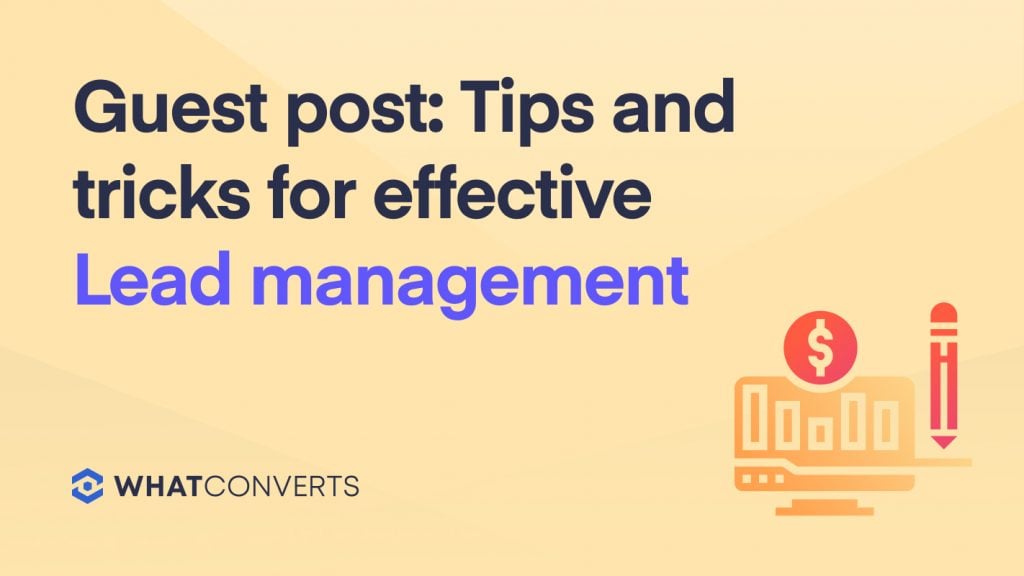
This is a guest post from Tegan Todd, a digital marketer at Paperform online form builder.
Growing businesses receive a constant influx of leads, but leads need a little nurturing before they become real revenue. This is known lead management, and can help speed up your sales cycle, boost revenue, and identify your most valuable customers.
Most leads need a little TLC to keep them on the path towards becoming a customer. As a marketer, it’s your job to understand the needs of your leads. Are they qualified? If so, pass them along to the sales team. Once the lead moves from marketing to sales, you’ll need a smooth, speedy process that guides leads along the sales pipeline. Each of these steps is a cog in the lead management machine.
If your company is failing to convert leads to sales, feel free to use the tips and tricks in this post to create and implement a more effective lead management process. Let’s dive right in!
What is lead management?
Managing leads is the process of acquiring information about potential customers and nurturing them to the point of purchase. The more you can refine and improve the process for your business, the sooner leads will transition into sales. An effective lead management tool can save you from missed revenue opportunities, drive higher sales conversion rates and help you prove the value of your lead generation efforts.
Why is Lead Management Important?
A well-organized lead management process turns leads into customers while driving business growth and efficiency. When you’re managing leads the right way, you can identify quality leads, filter out junk leads, and focus on the most valuable leads. Lead management can be an elimination tactic that allows you to focus your company’s valuable time and money on the leads most likely to become customers.
Identifying and understanding your leads
At its core, lead management is about identifying and understanding the real people behind your lead numbers. Use lead management tools to track potential customers’ needs, interests and demographics. Armed with these insights, you can create advertising content targeted to leads most likely to convert to customers.
Build a buyer persona for potential customers. Where are they based? What’s the size of their company? What need are they trying to fill? Every customer is different, so it’s worth adapting marketing and sales strategies to fit multiple personas.
Lead management impacts both the marketing and sales sides of things, so be sure to track which marketing sources deliver your leads. Did the person a display ad, a social post, or click on an email? Capturing lead and marketing data can help you direct budgets to the areas of marketing and advertising that work best, or away from those that are failing.
Marketing analytics tools show you how people arrive at your website and which pages they’re on when they reach out. If you know the content your leads are seeing, you can begin to to understand your prospective buyer’s interests.
Ranking your leads
Once you understand the customer behind the lead, you can rank leads to determine their sales potential. Are they qualified, and how much are they potentially worth? The more information you have about leads, the easier it is to help your sales team prioritize their efforts.
Lead value is a number that represents how much money the lead may be worth to the company. Lead score is a number that represents how likely the lead is to convert. Lead score factors in things like inactivity (not clicking email links), the decision maker involved, and budget concerns. Lead value and lead scores allow marketing and sales teams to identify which leads need nurturing and which are ready to convert.
High lead score = ready for the sales team.
Low score = needs more nurturing through marketing.
Nurture your leads
Develop relationships with your potential customers by listening to their needs and understanding pain points. When leads have a low score, it’s likely because they’re still figuring out whether your product is of value to them. It’s your job to convince them that it is.
You can do that through content marketing. Send prospects relevant, valuable content that is likely to attract, engage and move them towards purchase. To automate this process, you can use a form builder that integrates with messaging apps to speed this process along.
When creating marketing content, spread your content across several mediums such as social media, email, blogging or video. A few best practices: Segment your leads to send highly targeted ads, be personal in your communication and include a call to action. If you really want to give your leads a nudge down the sales funnel, use incentives like a free trial or a discount.
Turning your leads into sales
Converting leads into paying customers can be exciting, but it can’t be forced. When passing off leads to sales, make sure they are well nurtured and inclined to buy. Provide salespeople with all the lead data you’ve collected. Timeliness is important in this step; you want to allow salespeople to contact leads as quickly as possible while your company is still top-of-mind for potential customers. If you fail to do this, leads may need to go through the nurturing phase again.
Always follow up
Whether you think the lead is going to convert or not, it’s always worth checking in. You might be surprised; some leads seem uninterested but just need a follow-up to answer one or two questions that were holding them back.
Wrapping it all up
Lead management is one step of a three-part system of tracking, managing, and reporting on leads. If you do all three things well, you can foster better relationships between sales and marketing teams while streamlining the way you turn potential customers into real revenue. It can take some time to learn the ropes of effective lead management, but once you find what works for your company, both your marketing and sales departments will benefit.
Get a FREE presentation of WhatConverts
One of our marketing experts will give you a full presentation of how WhatConverts can help you grow your business.
Schedule a Demo
Grow your business with WhatConverts








